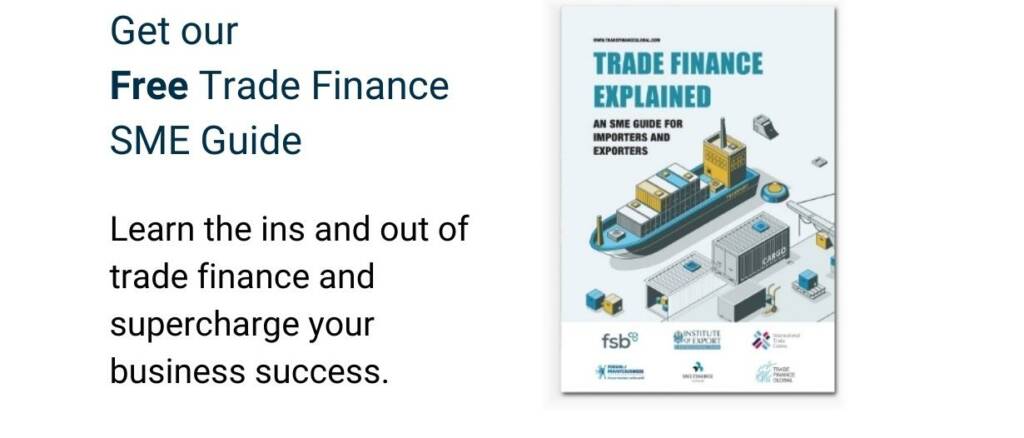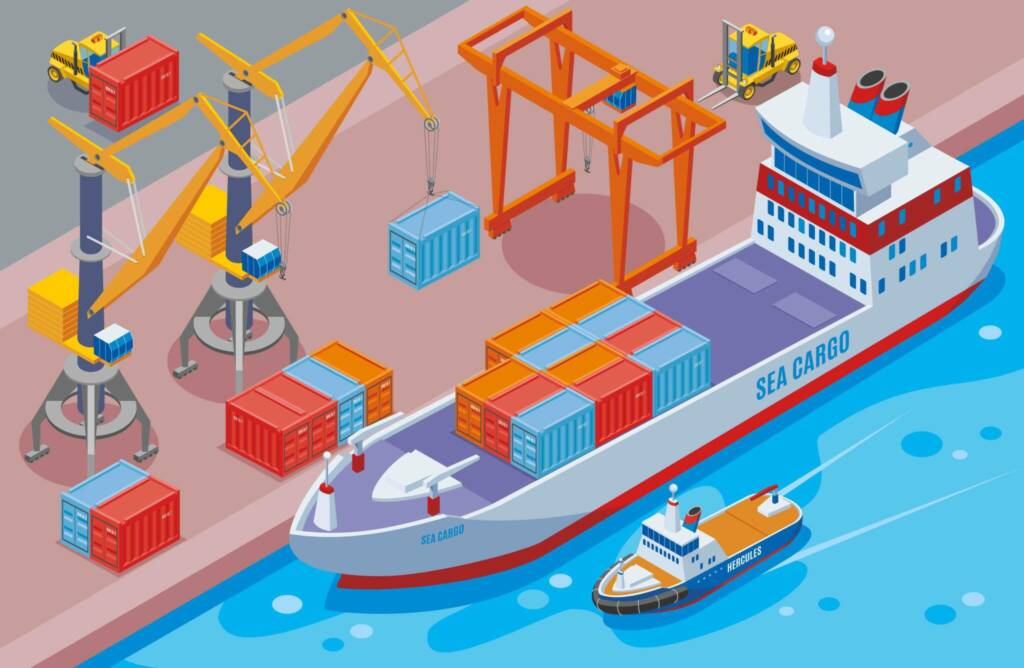Estimated reading time: 7 minutes
Letters of credit, forfaiting, factoring, export finance, and trade credit: these are the most popular trade finance techniques that companies are using to finance their international trade
In this short guide, we cover the following five trade finance instruments:
Trade finance – All you need to know
Trade finance is the cross-border or domestic financing of goods or services in a trade transaction, at any point from a supplier all the way through to the end-buyer.
As such, trade finance is an umbrella term that covers a variety of financial techniques and instruments used by importers and exporters.
These include letters of credit (LCs), bonds, guarantees, purchase order finance, stock finance, structured commodity finance, and invoice finance (discounting and factoring).
It is estimated that up to 80% of global trade relies on trade finance, according to the World Trade Organization (WTO).
However, according to the Asian Development Bank (ADB), the global trade finance gap hit a record high of $1.7 trillion in 2020.
This is largely due to the fact that smaller companies are unable to access trade finance, whether due to lack of education or that their applications are rejected.
It is therefore crucial that such companies understand the nature of trade finance products and how to access them.

Put simply, trade finance helps to facilitate the growth of a business.
Managing cash and working capital are critical to the success of any business, and trade finance is a tool that can be used to unlock capital from a company’s existing purchase orders, stock or receivables.
In turn, trade finance allows businesses to offer more competitive terms to both suppliers and customers, by reducing payment gaps in a business’s trade cycle.
It is therefore beneficial not only for business growth, but also for supply chain relationships.
Trade finance offers a solution for short-term and medium-term working capital, and it uses the underlying products or services being imported or exported as security or collateral.
It also increases the revenue potential of a business, as earlier payments may allow for higher margins.
Likewise, using trade finance allows businesses to request higher volumes of stock or place larger orders with suppliers, leading to economies of scale, bulk discounts, and higher profit margins.

For the uninitiated, the world of trade finance can seem complex and overwhelming, but in reality, the underlying principle of all trade finance is the essentially same.
It’s an IOU or guarantee of one form or another, that allows a trade to take place despite one or more parties not having immediate access to – or not wanting to hand over immediately – the required capital.
In this short article, we will explore five trade finance techniques that can help you on your importing or exporting journey.
1. Letters of credit (LCs)
Letters of credit (LCs) are one of the most common types of trade finance instrument, and are also one of the easiest to understand.
An LC is a legally-binding document issued by a bank or a specialist trade finance institution, which ensures that a seller of goods or services will get paid, as long as the terms set out in the LC are fulfilled.
An LC therefore requires an importer, who works with an ‘issuing bank’, and an exporter, who works with a ‘confirming bank’.
The issuing bank ensures that the confirming bank will receive payment for the transaction as per the terms of the LC – usually on receipt of the goods – thus reducing the risk of non-payment for the supplier (and non-delivery for the buyer).
This is called credit enhancement, and it also explains why creditworthiness is so important when using LCs.
2. Forfaiting
Forfaiting is a less common technique in trade finance, but it has a sizable market share nonetheless.
New forfaiting transactions typically amount to around $30 billion every year, and at any given time, there are $60 billion to $75 billion in forfaiting transactions outstanding.
Forfaiting is a trade finance technique that allows exporters to obtain cash by selling their medium and long-term foreign accounts receivable at a discount to a forfaiter.
This is done on a ‘without recourse’ basis, which means that the forfaiter, typically a bank or financial institution, assumes 100% of the risk of non-payment from the exporter.
The receivables are then guaranteed by the importer’s bank, which allows the exporter to remove the transaction from their balance sheet, and allows the forfaiter to turn a profit when the foreign buyer receives the goods.
3. Factoring
Factoring is similar to forfaiting, albeit with some important differences.
For one, the global factoring market is much smaller. In 2019, for example, the global factoring market was estimated to be worth €2.9 billion in 2019, according to factoring association FCI.
When an exporter sells an invoice to a trade financier at a discount, the financier then becomes known as the ‘factor’.
Having acquired the invoice – i.e. the right to the goods – at a discount, the factor is then able to sell the goods to an importer at full price, thus making a profit on the sale.
In other words, the exporter accepts a slightly lower price for the product, in exchange for the increased security of immediate payment from the factor.
4. Export finance
Export finance, also known as export credit, is a trade finance technique favoured by small and medium-sized enterprises (SMEs), as it is often issued through government agencies (export credit agencies), although can also be accessed through banks and lenders.
Most major economies have their own export credit agency (ECA), such as UK Export Finance (UKEF) or the Export-Import Bank of the United States (US EXIM Bank).
ECAs supply working capital to exporters so that they can reach a larger, more distant, or more high-risk market.
Using direct credit from an ECA, an exporter can supply goods using cash that they might otherwise not have access to.
Once the trade transaction is complete, and the exporter receives payment from the importer, the exporter then pays back the credit borrowed from the ECA at a slight premium.
Likewise, an importer can use direct credit from an ECA to purchase goods from abroad with cash they don’t have immediate access to.
Then when the goods arrive, and the importer sells them on to his next-in-line buyer, the importer pays back the credit borrowed from the ECA – once again, at a slight premium.

5. Trade credit insurance
Trade credit insurance is a straightforward technique used by exporters to protect against risk of non-payment.
Before entering a trade transaction, an exporter can purchase trade credit insurance from an insurance broker or directly from an insurance underwriter, who will price the insurance policy based on the perceived risk of the transaction.
Such risk factors include distance, mode of transport, value of goods shipped, political risk, and buyer creditworthiness.
Drawing credit from an insurer allows an exporter the comfort to ship goods in lieu of payment from the buyer.
What’s convenient about trade credit insurance is that every invoice an exporter has with a particular buyer could be covered for each year in a single policy.
And if for some reason the buyer decides not to pay for the goods shipped, the exporter simply makes a claim on his insurance policy, and the insurer will pay the exporter directly instead.
Do you need trade finance?
Trade Finance Global (TFG) is the leading trade finance platform.
We assist companies to access trade and receivables finance facilities through our relationships with 270+ banks, funds and alternative finance houses.
If you’re looking for solutions to assist the financing of your cross border trade, find out more here, or fill out the below form to get in touch with our trade finance team.
 Australia
Australia Hong Kong
Hong Kong Japan
Japan Singapore
Singapore United Arab Emirates
United Arab Emirates United States
United States France
France Germany
Germany Ireland
Ireland Netherlands
Netherlands United Kingdom
United Kingdom























Comments are closed.